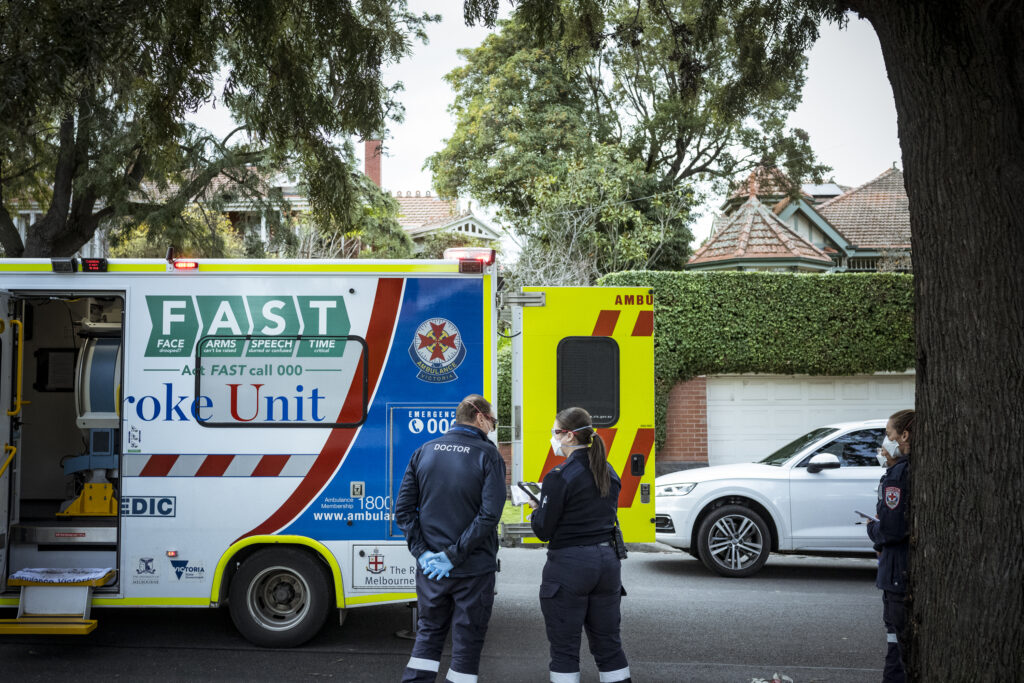Latest performance data from the Melbourne mobile stroke unit
Australia’s first mobile stroke unit continues to improve its cutting-edge prehospital response and treatment times.

Photograph by Chris Hopkins
Melbourne’s mobile stroke ambulance has been at the forefront of an international revolution in prehospital stroke care since it took to the city’s streets in 2017.
Data from almost five years showed significant improvements in treatment times and long-term outcomes for people who had experienced a stroke. Importantly, the Melbourne team has continued to evolve and refine its approach. Even in the midst of a global pandemic, the crew not only withstood the impacts of Covid-19, but actually improved performance.
Recent data shows:
- Patients can receive time-critical clot-dissolving treatment (thrombolysis) in as little as 15 minutes after the stroke ambulance arrives on scene
- Initial published data from the first 365 days of operation (2017-2019) showed that mobile stroke unit patients were treated with thrombolysis 42.5 minutes faster compared to all recognised acute stroke hospitals in Melbourne (median first ambulance dispatch to needle)
- Recent data (2017-2022) shows the proportion of patients who receive thrombolysis within the “stroke golden hour” (first hour after symptoms) has increased 12-fold (1.5% vs 18%).
- Those needing specialised clot retrieval thrombectomy receive treatment substantially faster across Melbourne thanks to improved triage. Time saving to thrombectomy has steadily increased after onset of the COVID-19 pandemic, despite its devastating results on healthcare. At least 50 minutes is saved if the patient requires bypass from their local hospital and around 30 minutes is saved if the patient is near a thrombectomy centre (median dispatch to arterial puncture).
The improved performance further demonstrates the value of our mobile stroke unit. It powerfully demonstrates the benefits of taking advanced prehospital care to the patient, especially during a pandemic when emergency departments are stretched beyond capacity.
“The MSU is also a world leading stroke clinical trials unit,” says neurologist, Prof Geoffrey Donnan. “A 2022 study, published in Lancet Neurology by Bivard and Parsons, compares clot busting drugs with major artery blockage, given before hospital arrival. Another unique MSU trial involves patients with intracerebral hemorrhage,” he says.
The design of a next-generation mobile stroke unit has been completed and forms part of a multi-stage grant awarded to the Australian Stroke Alliance, the Royal Melbourne Hospital and Ambulance Victoria, and other partners.
Work is well underway to purchase and fit out the new ambulance following philanthropic investment and $12 million in Victorian Government funding. It will serve Melbourne’s south-east in 2023.
Watch a video of the latest data here.
Co-chairs of the Australian Stroke Alliance, Professors Stephen Davis AO and Geoffrey Donnan AO are presenting the latest data at the World Stroke Congress in Singapore. Both are available for interview.